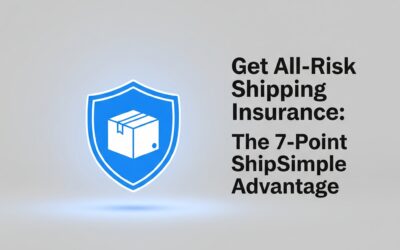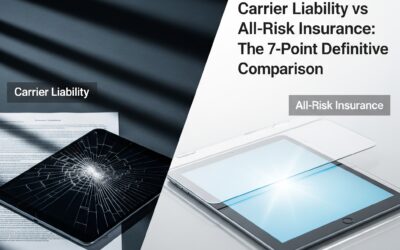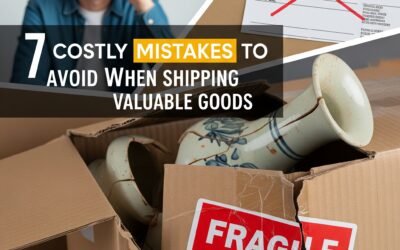Imagine you ordered that perfect outfit online, only for it to show up late, ripped, or in a worse state. And now you are lost in the delivery abyss thanks to a nightmarish order fulfillment experience. Frustrating, right? Enough to make you think twice about shopping there again? Absolutely!
Order fulfillment is basically what happens behind the scenes after you click “buy.” It’s the difference between a shrug and a happy surprise when your package arrives. Think of excited customers saying how fast and safe their order came. That’s the magic we’re talking about!
So without any further delay let’s unbox the secrets of order fulfillment! This guide will show you what it is, how it works, and how to use it to win over customer!
What is Order Fulfillment?
Order fulfillment, sometimes referred to as parcel fulfillment, is the streamlined process that ensures your customers receive their online purchases efficiently and safely. It starts when an order is placed and tracks every step involved in getting that order until it reaches the customer’s hands.
This includes meticulously verifying the order details (processing), sending confirmation to the customer, carefully picking the items from inventory, and packaging them securely.
Finally, the process concludes by swift and reliable shipping to the designated customer..
Order Fulfillment Process: An In Depth Look
While the order fulfillment process can vary by company, it typically consists of five key stages.
They are –
Step 1: Receiving
Before you can ship those amazing products, you have to have them! This first step, called receiving, is all about accepting and storing your inventory when it arrives at the warehouse.
If you do your own order fulfillment, you have to handle receiving yourself. But if you use a 3PL (third-party logistics company), they’ll handle that for you. They typically have a streamlined system for receiving inventory, which often involves submitting some paperwork. This ensures everything is organized and gets your products prepared for shipping faster.
Step 2 : Inventory storage
Upon arrival at the fulfillment center, a rigorous inventory process is conducted to establish precise stock levels and expedite order fulfillment efficiency. Items are then strategically allocated, either for immediate distribution or for short-term storage based on anticipated demand, or for longer-term storage for less frequently ordered items.
In an ideal scenario, the storage duration is meticulously optimized to ensure a smooth flow of goods to meet current sales demands. This minimizes the need to hold onto inventory for potential future sales that haven’t been confirmed.
Step 3 : Order Processing
The magic behind getting your order out the door starts with the order processing system. This is basically a fancy computer program that tells the warehouse exactly what to pick and pack for each order. For online stores, it can even connect to the shopping cart, making it automatic.
Once you click “buy,” the system springs into action, telling the warehouse what to grab and then get ready to ship. It’s almost like a robot helper for all order management!
Step 4 : Picking
Once an order comes into your online store, it’s time to pick up the ordered item! This is where someone, usually in the warehouse, grabs all the items the customer ordered.
If you handle your own fulfillment, this means a warehouse worker hunts down each item on the list. But if you use a third-party logistics company, their system assigns the order to a picking team.
This picker then gets a special note called a packing slip that tells them exactly what to grab, how much of each item, and where to find it in the warehouse. Basically, it’s a treasure map for your order!
Step 3: Packing
After every item is selected, it’s time to pack it all up safely and soundly! If you’re doing your own order fulfillment, this means grabbing a box or bag (like a bubble mailer) and putting everything the customer ordered inside. It’s important to use some padding or protection, like bubble wrap or packing peanuts, so the goodies don’t get banged around on their way to the customer.
If you use a 3PL (third-party logistics company), they’ll handle the packing for you. Some 3PLs might charge extra for packing materials, while others include it in their service. They’ll choose the best way to pack your products to keep them safe and also save on shipping costs. And if you want your brand to stand out, some 3PLs even let you use your own custom boxes or branded tape
Step 4: Shipping
Once everything’s packed up tight, it’s time to send it on its way! If you’re doing your own order fulfillment, this means buying a shipping label, sticking it on the box, and taking it to the post office. Or alternatively, you can use online shipping platforms to make the whole process easier by letting them come and pick it up. But if you use (3PLs) third-party logistics companies, they’ll handle all that for you!
Some third party logistic companies even team up with specific shipping companies to get you the best rates. Plus, they can arrange for carriers to pick up the orders right from their warehouse, saving you a trip to the post office!
Step 5: Returns Processing
Sometimes things don’t work out, and that’s okay! To make returns hassless for your customers, you can include a return label and some packing materials right with their original order.
When a customer sends something back, whether for an exchange or refund, you need to check it carefully to see if it can be put back in stock. Obviously, if it’s broken or damaged, it can’t go back on the shelf. The same goes for anything that’s dirty or worn.
Here’s what typically happens with returned items:
- Quality Check: They get inspected to see if they’re as good as new.
- Sorting: They’re categorized based on their condition.
- Restocking: If they pass the quality check, they go back up for sale.
- Vendor Return: If they’re broken or unusable, they might be sent back to the supplier for a refund or credit.
- Recycling: If they can’t be resold or returned, they might be recycled responsibly.
By handling returns efficiently, you keep your customers happy and your inventory organized!
Best Practices for Order Fulfillment

The key to getting orders out the door quickly is all about being super organized. Here are some tips to get you started:
- Streamline Receiving: Make checking in new products fast and efficient.
If something arrives damaged, send it back to the manufacturer quickly so you can get a replacement for your customer ASAP. This helps avoid delays and keeps your customers happy!
- Warehouse Organization: Think of your warehouse like a treasure map.
Put your most popular items (the “hot-ticket” ones) in the easiest spots for pickers to grab. Then arrange everything else based on how often it sells, with less popular items tucked further back.
- Shipping Savvy: Plan for fast and affordable deliveries.
Shop around for the best rates and carriers to get your products to your customers quickly and without breaking the bank. Also, have a backup plan in case of unexpected shipping delays or price hikes.
- Embrace Automation: Automate tasks whenever you can!
Use technology to make things easier! Automation can save you money on labor, create a safer work environment for your team, and overall make your operation run smoother.
By being organized and using these tips, you can get those orders out the door quickly and efficiently!
Challenges Faced During Order Fulfillment
Order fulfillment can be a tricky business! Here are some of the bumps you might encounter on the road:
- Running out of Stock: This is a surefire way to make customers unhappy. They might have to wait a long time or cancel their order altogether.
The only real exceptions are crazy weather events or unexpected emergencies, which most customers will consider
- Too Much Stuff: Holding onto a ton of inventory can be expensive, and what if nobody buys it? The key is to predict how much of each item you’ll need and keep just the right amount in stock.
- Delivery Delays and Damaged Goods: Nobody wants their package to take forever or arrive in pieces. Make sure you have a reliable shipping partner and that your products are packaged securely. Happy customers depend on it!
- Supply Chain Woes: This can get complicated! Maybe you rely on one supplier who has a problem, or maybe something unexpected disrupts the flow of goods. Having a backup plan and using software to track everything can help avoid these headaches.
By keeping these challenges in mind, you can streamline your order fulfillment process and keep your customers smiling!
Which Order Fulfillment Strategy Should You Choose?
When it comes to getting your products to happy customers, you have a few choices:
- Do it Yourself (In-House Fulfillment): This is like making your own birthday cake – you control everything, but it takes some effort! You’ll need the staff, the warehouse space, and the skills to get things done right. The upside? More control over costs and operations.
- Hire a Helper (Outsourced Fulfillment): This is like ordering a cake – someone else does the baking (and packing) for you! You just have to pick the right bakery (fulfillment company) and let them handle the details. This frees up your team to focus on other things, and it can be more predictable in terms of costs.
- A Little Bit of Both (Hybrid Model): Maybe you’re somewhere in the middle? This is like buying a pre-made cake and adding your own personal touch. You can pick and choose which parts of fulfillment you handle yourself and which you outsource based on your needs and resources.
The best choice for you depends on your specific situation. Consider the kind of products you sell, the different fulfillment options available, and the costs involved. A good financial analysis can help you decide which path is the sweetest (and most profitable) for your business!
Conclusion
There you have it! Order fulfillment, once a mystery behind the scenes, is now an open book. By understanding the stages, challenges, shipping terms and strategic choices involved, you can transform this process into a competitive advantage.
Remember, a smooth order fulfillment experience is the bridge between happy customers and a thriving business. So, choose your fulfillment path wisely, keep your processes organized, and watch your customer satisfaction soar!
FAQ’s
What Is The Objective Of Order Fulfillment?
The order fulfillment process isn’t just about picking and packing. It also includes keeping track of inventory (how much stuff you have left), talking to the delivery companies that bring your products to customers, and handling returns or giving money back if something goes wrong.
What Is The Difference Between Order Fulfillment And Shipping?
Shipping refers solely to the physical movement of goods from a point of origin to a designated destination. Order fulfillment, however, encompasses the broader spectrum of activities required to ensure a successful customer experience. This comprehensive process includes meticulously packing the ordered items, affixing the appropriate labels, and coordinating with a reputable carrier to facilitate the timely and secure delivery of the goods to the customer.
What Is The Difference Between Order Processing And Order Fulfillment?
While both involve getting your order to you, shipping is the act of transporting the package, like the mail carrier driving the truck. Fulfillment, on the other hand, is the behind-the-scenes work: finding your item, packing it securely, and calling the carrier to get it moving. It’s like getting your order prepped for its journey!





